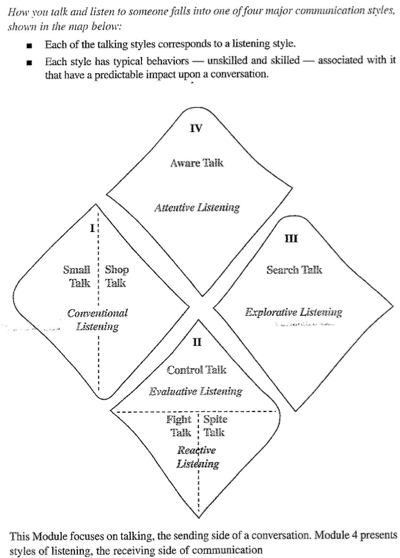 By Tom Hubler, Executive Consultant
By Tom Hubler, Executive Consultant
This article is Part 4 of a continuing series about the delicate issues among family businesses. Part 1 discussed financial vs. emotional equity and this article deals with trust and gratitude, which are necessary for emotional equity. Part 2 described family business challenges relating to trust and gratitude. Part 3 addressed the essential need for family meetings to balance the boundary between business and family.
This article is about some simple ideas to strengthen love in the family and nurture the business. Family members should:
- regularly and genuinely express their love and appreciation for what each has done for the other and what they mean to each other;
- be involved with each other’s lives by spending time individually with other generations and outside of the business to build emotional equity; and
- actively engage with one another through family meetings to share their values on money and wealth, which includes developing purposeful lives through stewardship and service.
Have a “common family vision”
A common family vision in this context is essentially a compact among family members to contribute to their common good. It implies compromise in that no one gets everything they want. When I was young I was taught that if you wanted unity in the family, you had to compromise. But when I compromise I usually feel terrible, so I do not recommend it. Similarly, I learned in church that to create unity in the family I needed to give things up. When I did, I felt worse than when I compromised.
Instead, I think of creating unity in terms of contribution rather than sacrifice. A little voice says, “For the sake of family unity, by contributing I will find things that inspire the common family vision and make me feel good because it’s necessary.” This is a much more productive and satisfying way to look at it.
A common family vision is a promise
Every family member should be encouraged to contribute to the common good and hopefully be inspired by their common vision. A common family vision should not be seen in terms of giving up self for the sake of unity in the family. Instead, family members should learn to rely on other members to contribute when their time comes. When this is done out of love and a sense of generosity, abundance, and trust, family members will willingly compromise some of their own feelings to support the interests of the family vision. When that happens, it unites the family and encourages members to manifest the vision collectively and individually.
 A common vision gives direction
A common vision gives direction
This common vision is not simply a verbal understanding. It is not a vague exchange on how things should be. Rather it is a discussed, debated and recorded statement infused with everyone’s contributions. It allows a family business to focus on the positive rather than the negative.
Case study: the Sweeney family vision
Below is an example of a common family vision, in this case generated and used by the Sweeney family.
The family represented a diverse and expansive set of interests. There were four adult children. Some were in the firm and some had their own businesses. They developed their common family vision to bring them together, including the parents. They understood the importance of the family values that linked them together.
Our family circle is an unbreakable bond of support, belief in each other, and unconditional love. It inspires us to live our lives with humility, integrity, and philanthropy. We manifest this through our families, our foundation, and our business.
The Sweeney common family vision represents the soul of that family. It is based on their values, which for the Sweeneys are religious, conservative and more traditional. Whenever there are difficulties – in the family or in the business – this common vision is the tiller that gives direction to a wandering boat. Mutually created and agreed upon, it gives each person a reasonable place to start. It can help tamp angry flare-ups when feelings are hurt, and turn heat to light.
Communication
A common family vision sets a positive tone, but it is hamstrung if family members communicate poorly. Good communication skills are necessary for working together as a business and being together as a family. This is doubly important when the family is the business. Issues can escalate to become more difficult and complicated in a business family. Firing or demoting a family member is likely far more traumatic than a non-family worker. It resonates throughout the family and across time. This makes good communication exceptionally important – for everyone, in all situations.
When the family sets out to create its own common family vision, individual members accomplish it by being respectful and honest, and sharing feelings and wants. The way the vision is built also models an appropriate communication style and promotes listening, so that each person can share his/her perspective without being judged, criticised or blamed. Once understood and practised, the vision becomes the process for managing differences. It is a win-win strategy.
Considered communication is key
Different situations require different communications styles. Conversations benefit from all parties understanding and using the style appropriate to the situation.
Sherod Miller PhD, author of several books on interpersonal communication and team development, has described the skills that offer practical ways to strengthen family communication and manage. I have found the insights into communication styles extremely helpful and have modified them below with the author’s permission.
When trying to solve a problem, use what Miller calls ‘search talk’ and ‘aware talk’ styles. They are not judgmental and help each person share feelings openly so that a potential solution can be found. Using an inappropriate style can make a mess of things. For example, using ‘control talk’ to discuss a problem can easily seem heavy-handed or dictatorial; using ‘small talk’ can make it sound like the problem is trivial or even non-existent.
The various communication styles are as follows:
- Small talk is everyday conversation designed to help people connect.
- Shop talk is informal conversation about the business.
- Control talk is one-way communication designed to teach or instruct.
- Fight talk is intended to get one’s point across at any cost.
- Spite talk is indirect communication designed to cover up hurt feelings.
- Search talk is brainstorming and asking open-ended questions to clarify the issue.
- Aware talk is open communication focused in the here and now, revealing feelings and wants and including attentive listening.
Communication Styles Map®

For more on the concept of the common family vision, see Tom’s book, The Soul of Family Business, at Amazon.com. Or, contact Tom at Tom.Hubler@thePlatinumGrp.com.
